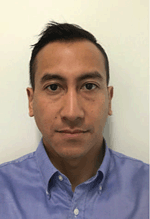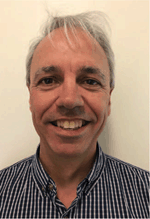Pushing the boundaries – deployment of innovative drilling, completion and production technology to advance a deep coal seam play
Romi Branajaya A B , Peter Archer A and Andrew Farley AA Strike Energy Ltd, 1/31-35 George Street, Thebarton, SA 5031, Australia.
B Corresponding Author. Email: romi.branajaya@strikeenergy.com.au
The APPEA Journal 59(2) 770-775 https://doi.org/10.1071/AJ18115
Accepted: 4 April 2019 Published: 17 June 2019
Abstract
Following technical success of vertical and deviated wells, Strike Energy audaciously continued to push the envelope while proving the commerciality of the deep coal seam play in PEL96. It was clear that extending the reservoir contact area of the wellbore and using innovative dewatering to significantly increase drainage was prudent. A horizontal well intercepting a vertical well coupled with multi-stage fracture stimulation was selected to achieve that goal. Furthermore, a new application of wide operating range electric submersible pumps would enable dewatering to much lower water rates to avoid running the pumps dry or damaging the fracture network upon gas desorption and breakthrough. Although a wellbore stability issue was encountered during the well construction phase, requiring a modified well trajectory, the horizontal well successfully intercepted the vertical well, reaching planned total measured depth. It also altered fracture stimulation approach to an indirect vertical fracture completion application, whereby fractures are initiated from the interburden layer below the coal seam. A million pounds of proppant was successfully placed in seven fracture stages. During the proppant pumping, diagnostic tools (tiltmeter and microseismic) and chemical tracers were utilised. The real-time microseismic confirmed the propagation of fracture from interburden upwards into the target coal seam. This presents the integration of well performance, subsurface information, past drilling practices and stimulation treatment results to support the decision-making process of a horizontal well construction and stimulation design as well as integration of real-time information to overcome operation difficulties and optimise well delivery. Tracer samplings and ongoing production testing during dewatering are also presented.
Keywords: Cooper Basin, hydraulic fracturing, indirect vertical fracture completion, Patchawarra Fm.

Romi Branajaya is a petroleum engineering professional with 15 years of industry experience. He holds a BSc from Trisakti University, Indonesia and MSc from Texas AandM University, both in Petroleum Engineering. He is currently working as a Senior Completion Engineer with Strike Energy and has previously worked for Repsol-YPF, CNOOC, Santos and Maersk Oil. Throughout the years he has held various technical positions in reservoir, production and completion engineering and worked on exploration, development, mature asset and enhanced recovery operations, across many parts of the world including offshore Indonesia, the North Sea and onshore Australia (Cooper Basin). He is a member of SPE. |

Peter Archer is a seasoned energy industry professional with over 30 years of engineering experience in well drilling, completions and fracture stimulation; including unconventional gas wells; onshore Australia and more recently geothermal wells in New Zealand. Over the last 12 years he has held leadership positions of performance driven teams in Drilling and Completions (office) and Well Site Operations (field). His career highlights have included guiding technically challenging and marginally commercial well development projects; a thorough understanding of well engineering: drilling, completions and fracture stimulation; seeking solutions ‘outside of the box’; mentoring new employees; integrating cross-functional teams requiring operations, engineering, procurement, EHS personnel; and successfully delivering business improvements in cost efficiency, technical innovations, safety and environmental protection. |

Andrew Farley graduated from the University of Newcastle (Australia) in 2002 with a BSc in Geology. He has 16 years of experience working with onshore oil and gas operators on exploration and development projects in all five states of mainland Australia. Prior to joining Strike Energy in 2012, Andrew worked with AGL Energy on the Camden Gas Project development, Silver Springs Underground Gas Storage Facility, and Surat Basin conventional exploration assets. Andrew has held the position of Manager Geoscience with Strike since 2014 and is responsible for all of Strike’s subsurface exploration activities. |
References
Bale, A., Smith, M. B., and Settari, A. (1994). Post-frac productivity calculation for complex reservoir/fracture geometry. SPE Paper 28919-MS presented at European Petroleum Conference in London, United Kingdom, 25–27 October 1994.Olsen, T. N., Bratton, T. R., Donald, A., Koepsell, R., and Tanner, K. (2007). Application of indirect fracturing for efficient stimulation of coalbed methane. SPE Paper 107985 presented at 2007 SPE Rocky Mountain Oil & Gas Technology Symposium in Denver, Colorado, 16–18 April 2007.


